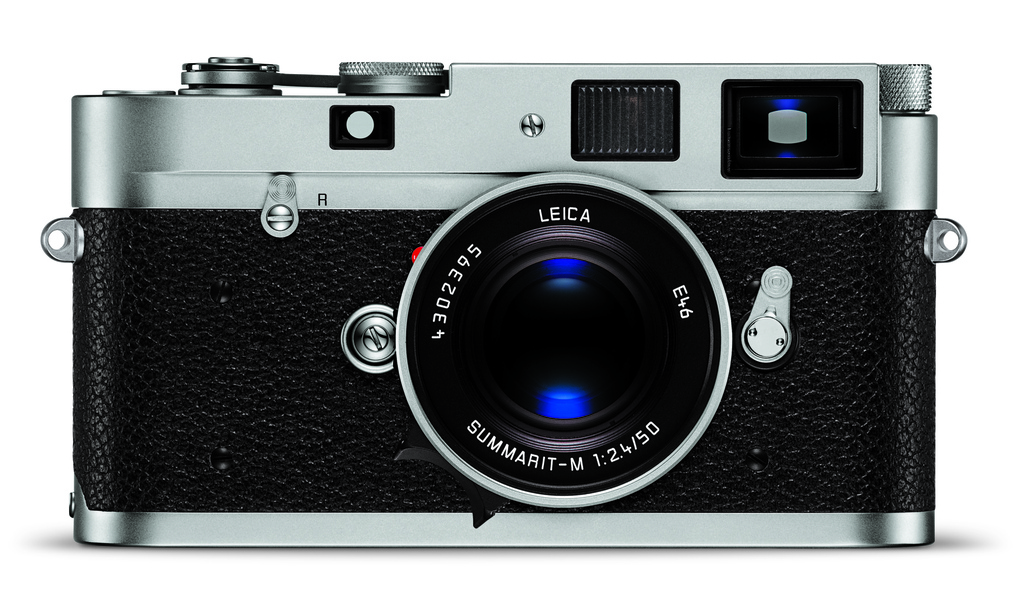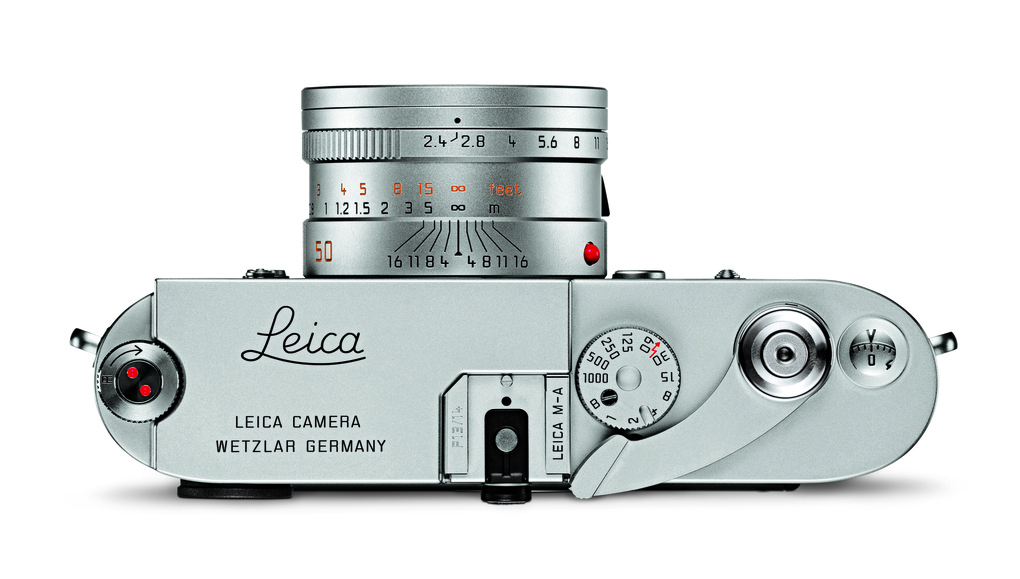Leica M-A (Typ 127) 35mm Rangefinder Camera Officially Announced
Leica Camera presents a rangefinder 35mm film camera, the Leica M-A (Typ 127). The feature set is identical to the still available Leica MP but it doesn’t have exposure metering, battery or any electronics at all.
The Leica M-A (Typ 127) rangefinder camera is a completely mechanical camera, no battery is required for operation and the only exposure control offered is a choice of shutter speed, up to 1/1000 sec.
A large, bright 0.72x-magnification viewfinder pairs with a precise rangefinder mechanism to enable comparative manual focusing control with M-mount lenses, along with parallax-corrected compositional framing. Leica M-A (Typ 127) camera price is $4,750.
Leica M-A (Typ 127) 35mm Rangefinder Camera Officially Announced
Leica M-A (Typ 127) Rangefinder Camera Specifications
| Camera type | Leica M-A (type 127) compact, 35 mm rangefinder system camera with a mechanically controlled shutter |
| Lens mount | Leica M-Bayonet |
| Lens system | Leica M-Lenses,16–135 mm |
| Exposure control | Manual setting of shutter speed and aperture with values from an external exposure meter or by estimation |
| Flash exposure control | |
| Flash connection | Hot shoe – accessory shoe with centre contact |
| Synchronisation | On first shutter curtain |
| Flash exposure control | Computer control by the flash unit or guide number calculation and manual setting of the required aperture value |
| Viewfinder | |
| Viewfinder principle | Large, bright, combined bright-line viewfinder with automatic parallax compensation |
| Eyepiece | Adjusted to –0.5 dioptres; correction lenses available for –3 to +3 dioptres |
| Image field framing | By projection of pairs of bright-line frames for 28 and 90 mm, 35 and 135 mm, 50 and 75 mm lenses; automatic display of corresponding frames when lenses are locked into the bayonet mount |
| Frame selector | Lever enabling alternative frame pairs to be displayed in the viewfinder without changing lenses (e.g. for framing comparisons) |
| Parallax compensation | The horizontal and vertical differences between the viewfinder and lens axes are automatically compensated for in relation to the focusing distance |
| Concordance of viewfinder and film image | The bright-line frame size corresponds to an image size of approx. 23 × 35 mm at the minimum focusing distance for all focal lengths; focused at infinity, and depending on the focal length, approx. 9% (28 mm) to 23% (135 mm) more will be captured on the film than is shown in the corresponding bright-line frame |
| Magnification | 0.72× (for all lenses) |
| Long-base rangefinder | Coincident and superimposed image rangefinder, shown as a bright field at the centre of the viewfinder image |
| Effective rangefinder base | 49.9 mm (mechanical rangefinder base 69.25 mm × viewfinder magnification 0.72×) |
| Shutter and shutter release | |
| Shutter | Horizontal rubberised-cloth focal plane shutter; extremely low noise; mechanically controlled |
| Shutter speeds | From 1 s to 1/1000 s in one-stop increments, B for exposure times of arbitrary length |
| Shutter release | Standard internal thread for remote-release cables |
| Film loading, advance and rewinding | |
| Loading | Manual loading after removal of the base and opening the rear flap |
| Film advance | Manually, with rapid wind lever or Leicavit M; motorised, with Leica Motor-M, Leica Winder-M, Leica Winder M4-P or Leica Winder M4-2 (from article number 10 350) |
| Rewinding | Manual, pull-out rewind knob after disconnecting the advance mechanism with the R-lever on the front of the camera |
| Frame counter | On camera top plate; automatically reset when camera baseplate removed |
| Camera body | |
| Material | One-piece full-metal body with rear flap; top deck and baseplate in brass with black or silver chrome finish |
| Tripod bush | Thread A 1/4, DIN 4503 (1/4″) |
| Rear flap/features | Reminder dial for film sensitivity |
| Dimensions | Approx. 138 × 38 × 77 (length × depth × height, in mm) |
| Weight | Approx. 578 g |
| Package includes | Body cap and carrying strap |
The pinnacle of mechanical technology: LEICA M-A
The precision tool for lovers of decelerated photography
With the Leica M-System, Leica Camera AG, Wetzlar, is one of the few manufacturers still producing both analogue and digital cameras. In this, the company can draw from decades of experience in the construction of the finest precision-engineered cameras. Now – 60 years after the first Leica M rangefinder camera, the M3, left the factory to significantly change the world of photography – we have chosen the occasion of this anniversary to present a new analogue model: the Leica M-A.
As a purely mechanical rangefinder camera, the Leica M-A stands for a return to photography in its most original form. Without reliance on a monitor, exposure metering or batteries, photographers can explore entirely new creative horizons. Because, with a camera reduced to only essential camera functions, users of the M-A can now concentrate entirely on the essential parameters of subject composition – namely focal length, aperture and shutter speed – and on capturing the decisive moment.
From its shutter-speed dial and the aperture ring on the lens to the characteristic rangefinder focusing principle – the technical specifications of the Leica M-A are essentially based on the currently available analogue Leica MP. All of its precision-engineered components and functions are designed and constructed for absolute robustness and a long working life, and are housed in a painstakingly hand-built metal body. This ensures that the Leica M-A, as a product with particularly enduring value, brushes aside every challenge with absolute dependability.
The visible elements of the Leica M-A are as timeless as the precision-engineered principles employed inside it. For example, the Leica red dot was omitted to emphasise the classical simplicity of its design. Seen from the side, the Leica M-A is significantly slimmer than its digital counterparts.
The camera can be supplied in a choice of two different finishes: the classic appearance of the silver chrome version carries forward the traditions of 60 years of Leica M design. In the black chrome alternative, the M-A is reminiscent of the style of the M Monochrom and sets new standards in unobtrusiveness and discretion. While the silver chrome version of the M-A displays its origins in the engraving on its top plate, only much closer scrutiny of its completely matt black counterpart reveals the discreetly engraved Leica script on its accessory shoe.
Each Leica M-A is supplied complete with Kodak Tri-X 400 black-and-white film, which is also celebrating its 60th anniversary this year. Since its appearance on the market in 1954, its unmistakeable look, exceptional sharpness and tonal gradation, extremely broad exposure latitude and very good shadow detail made this black-and-white film a firm favourite and the classic medium for art and reportage photography.
The Leica M-A will be available from authorised Leica dealers starting October 2014.










